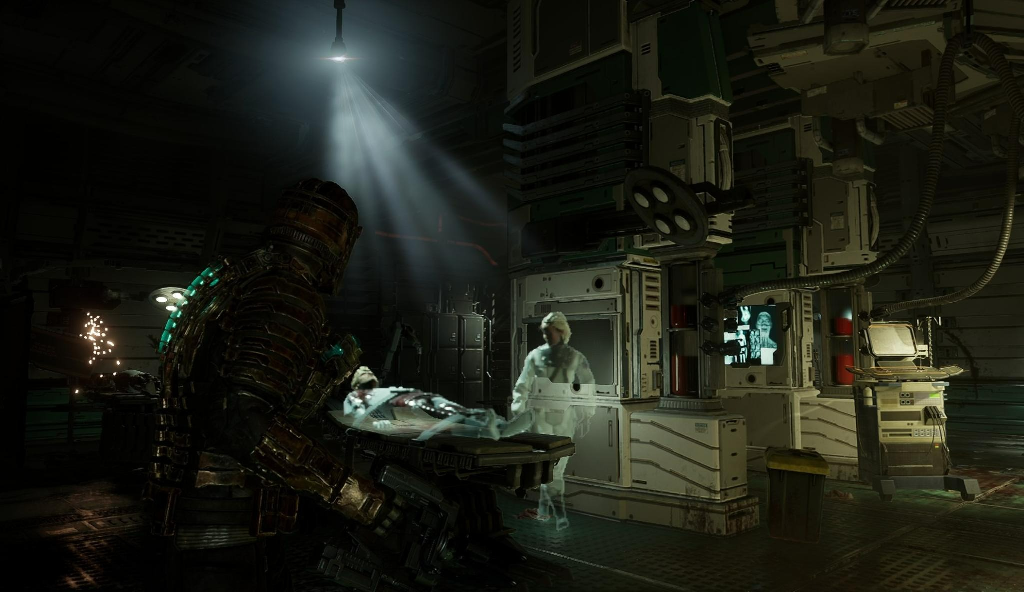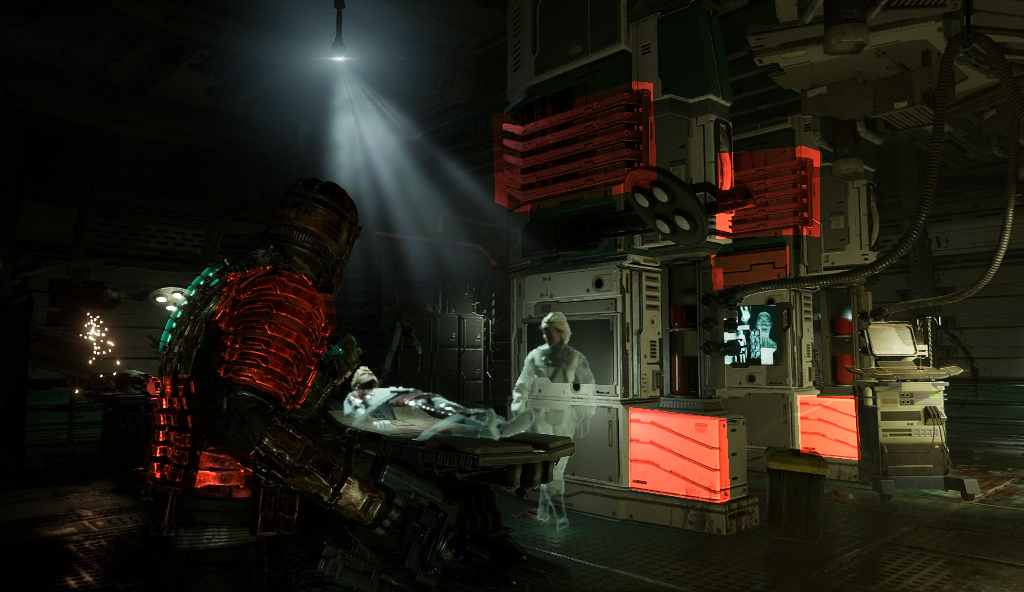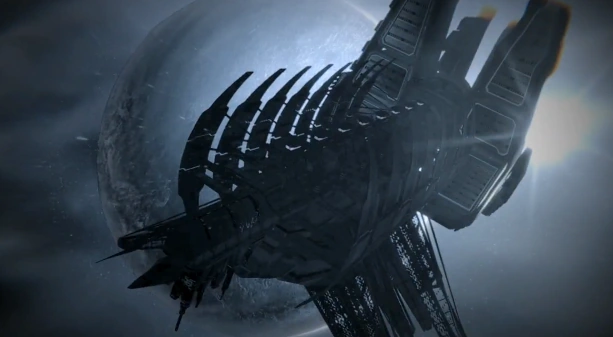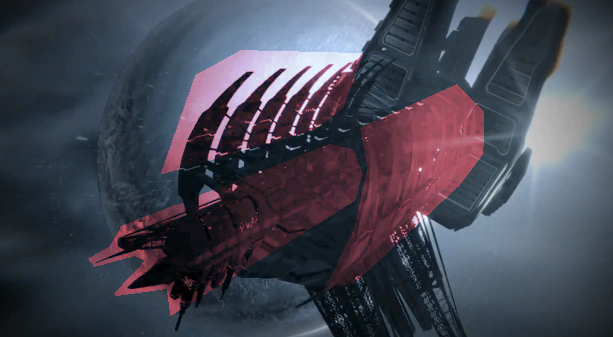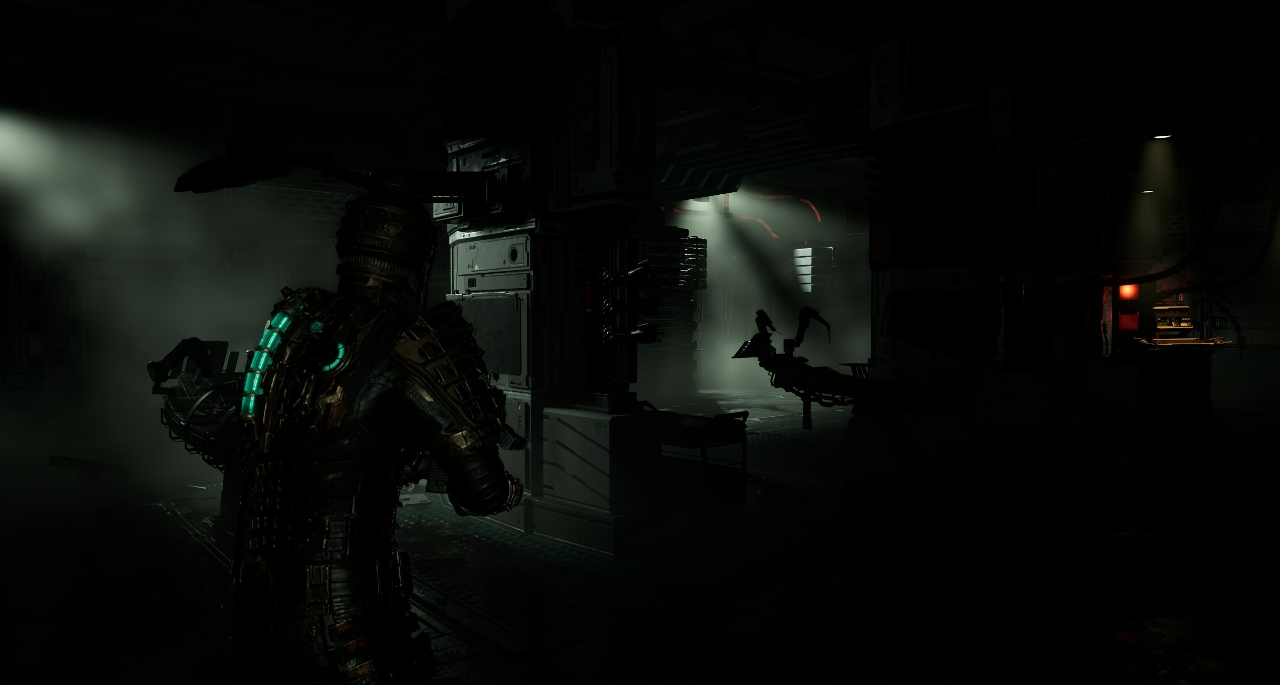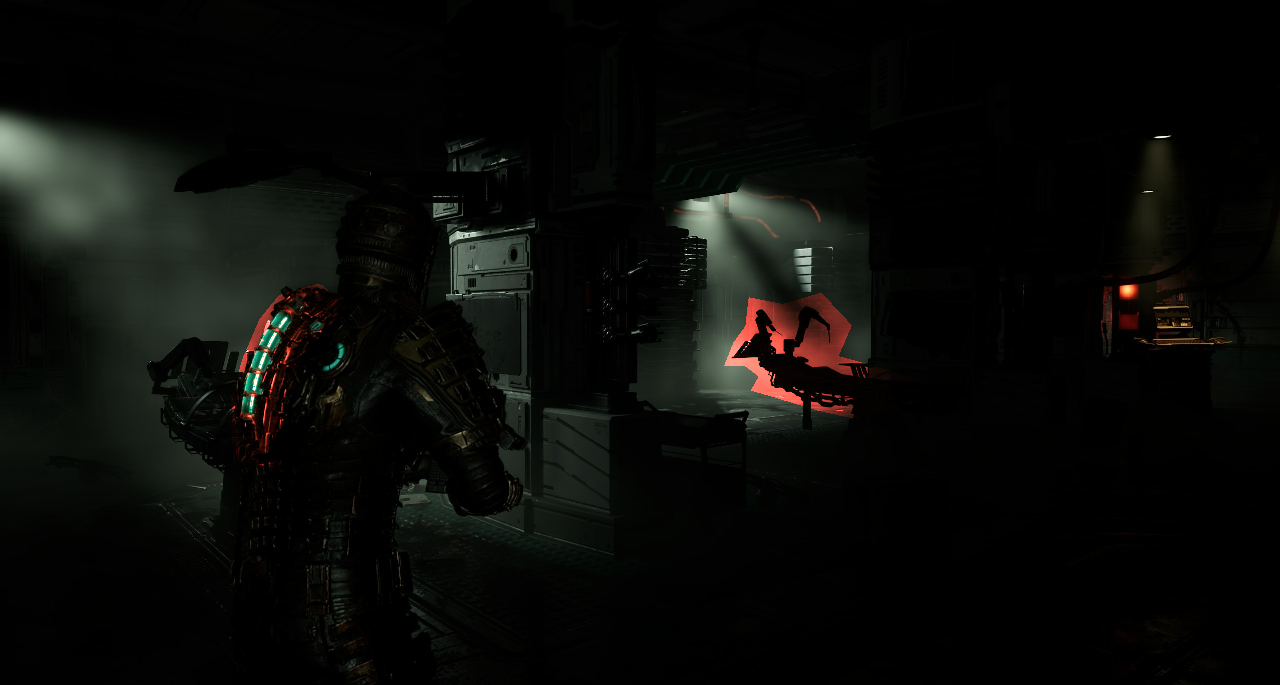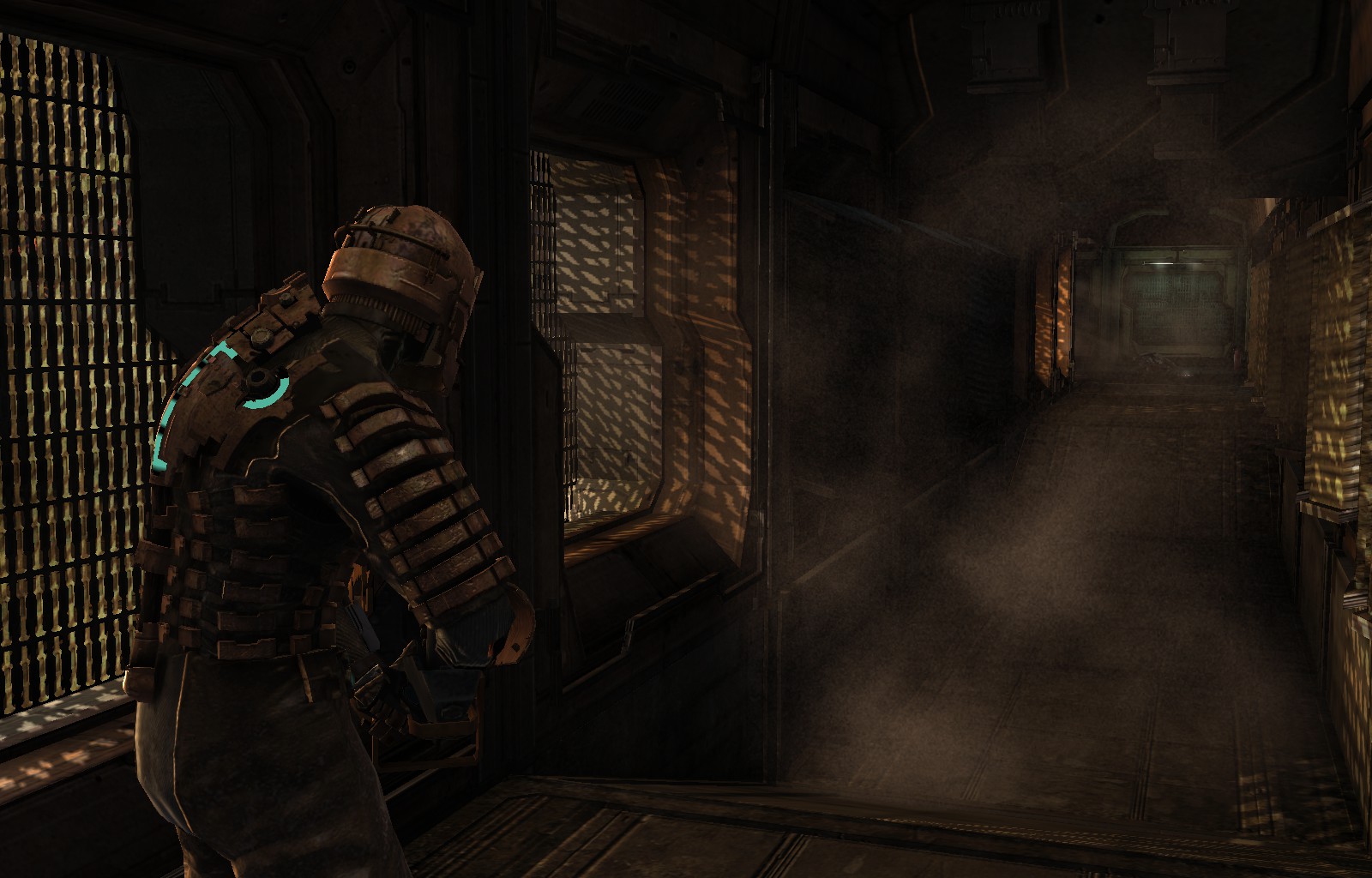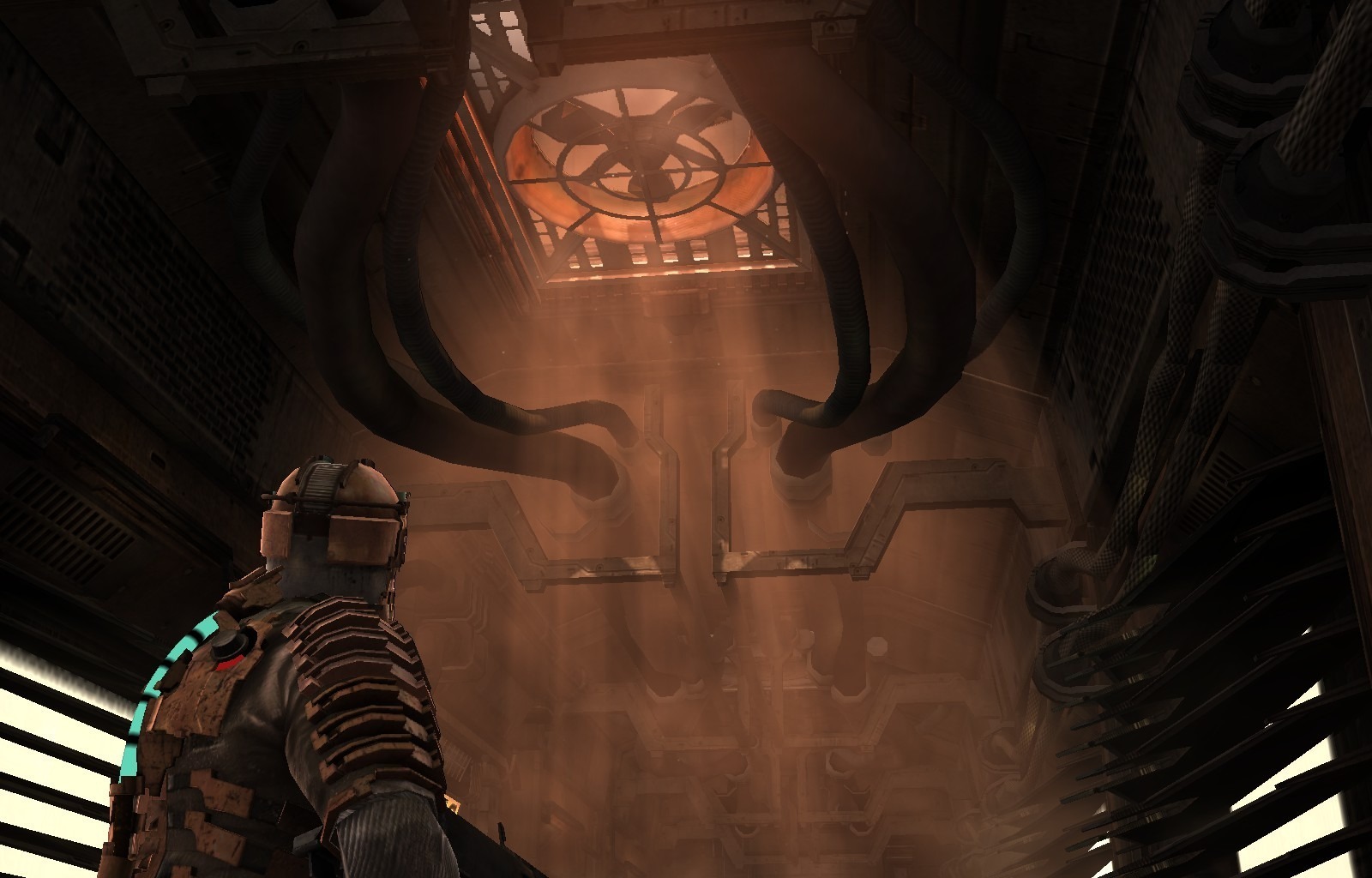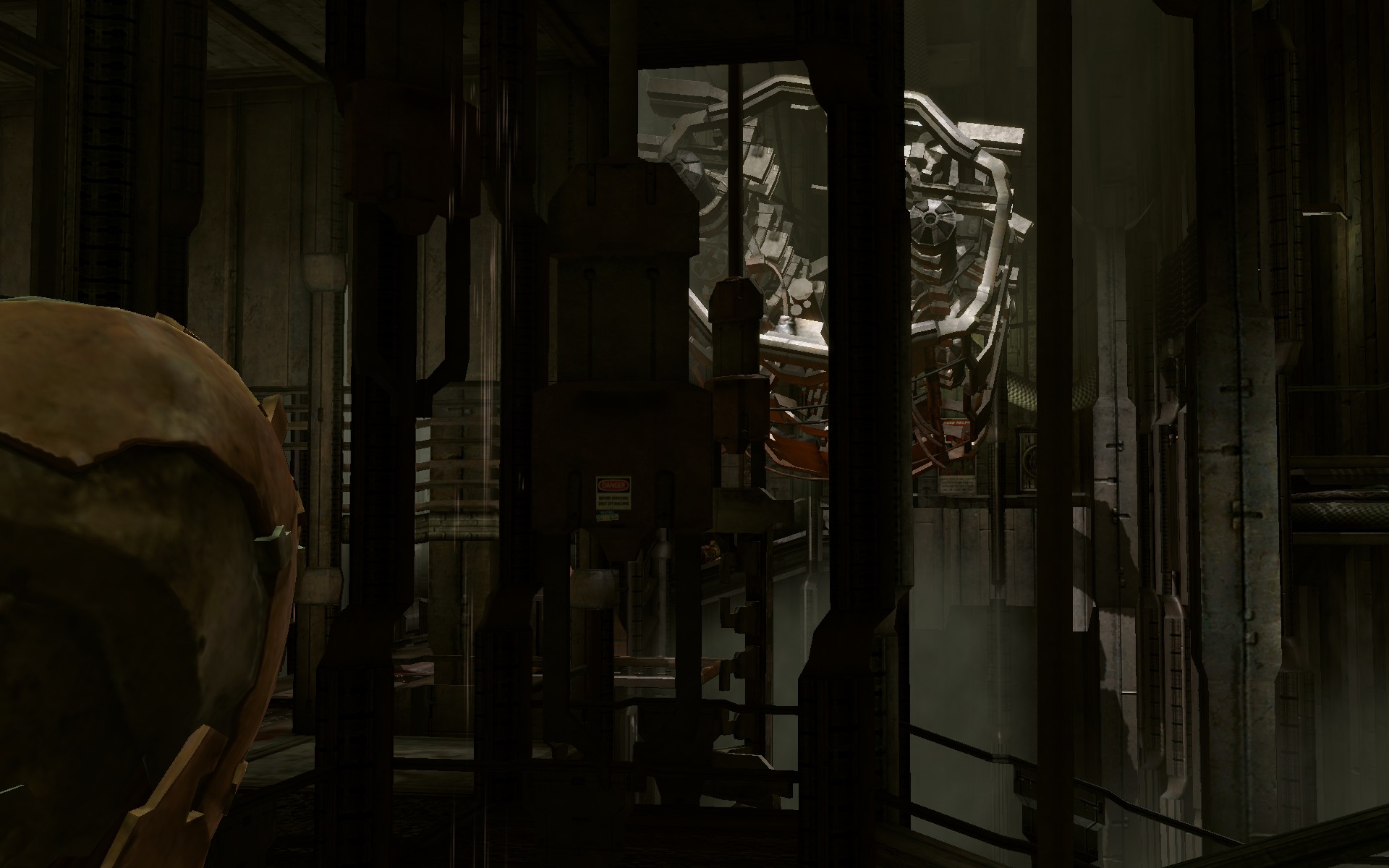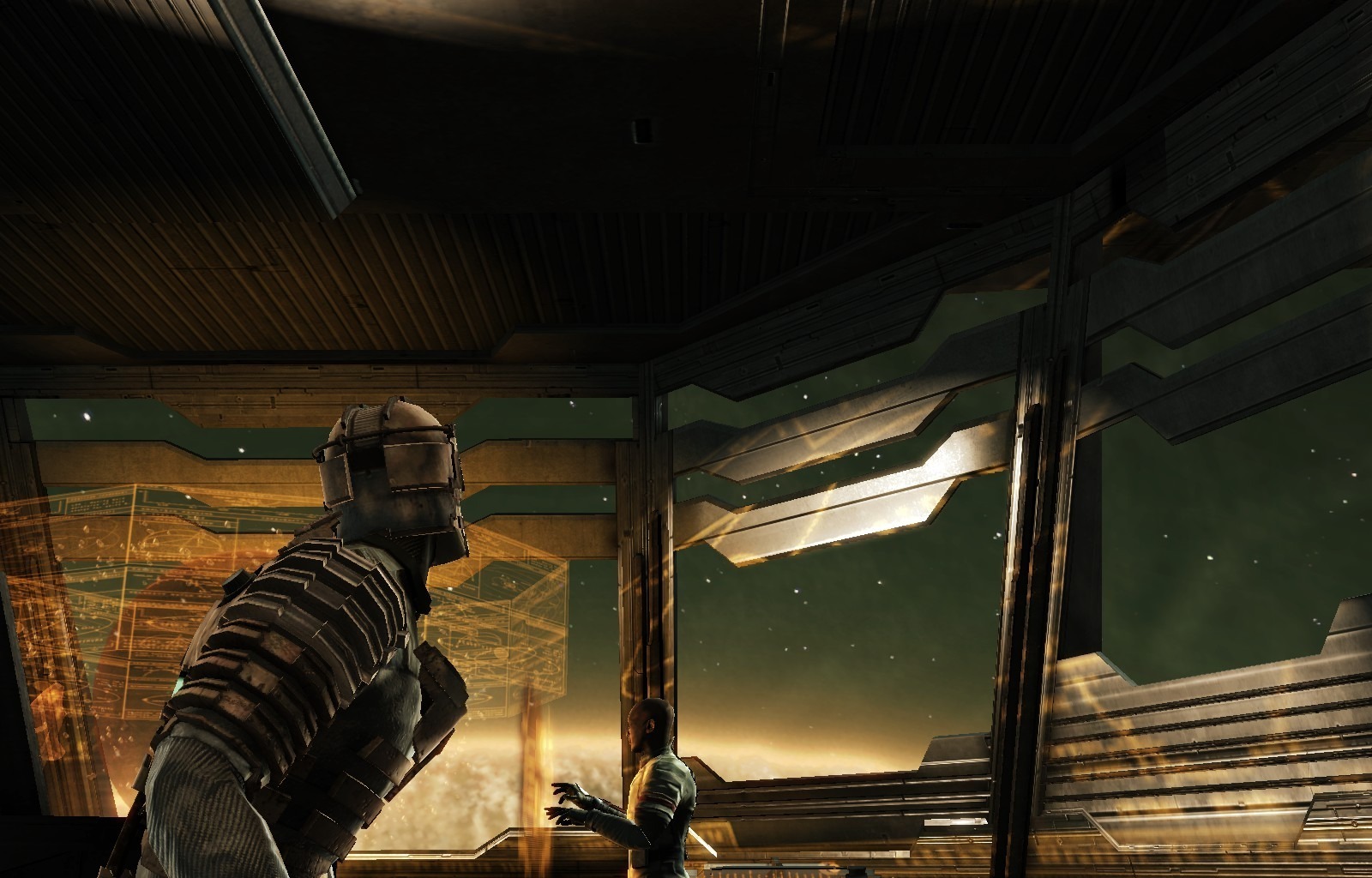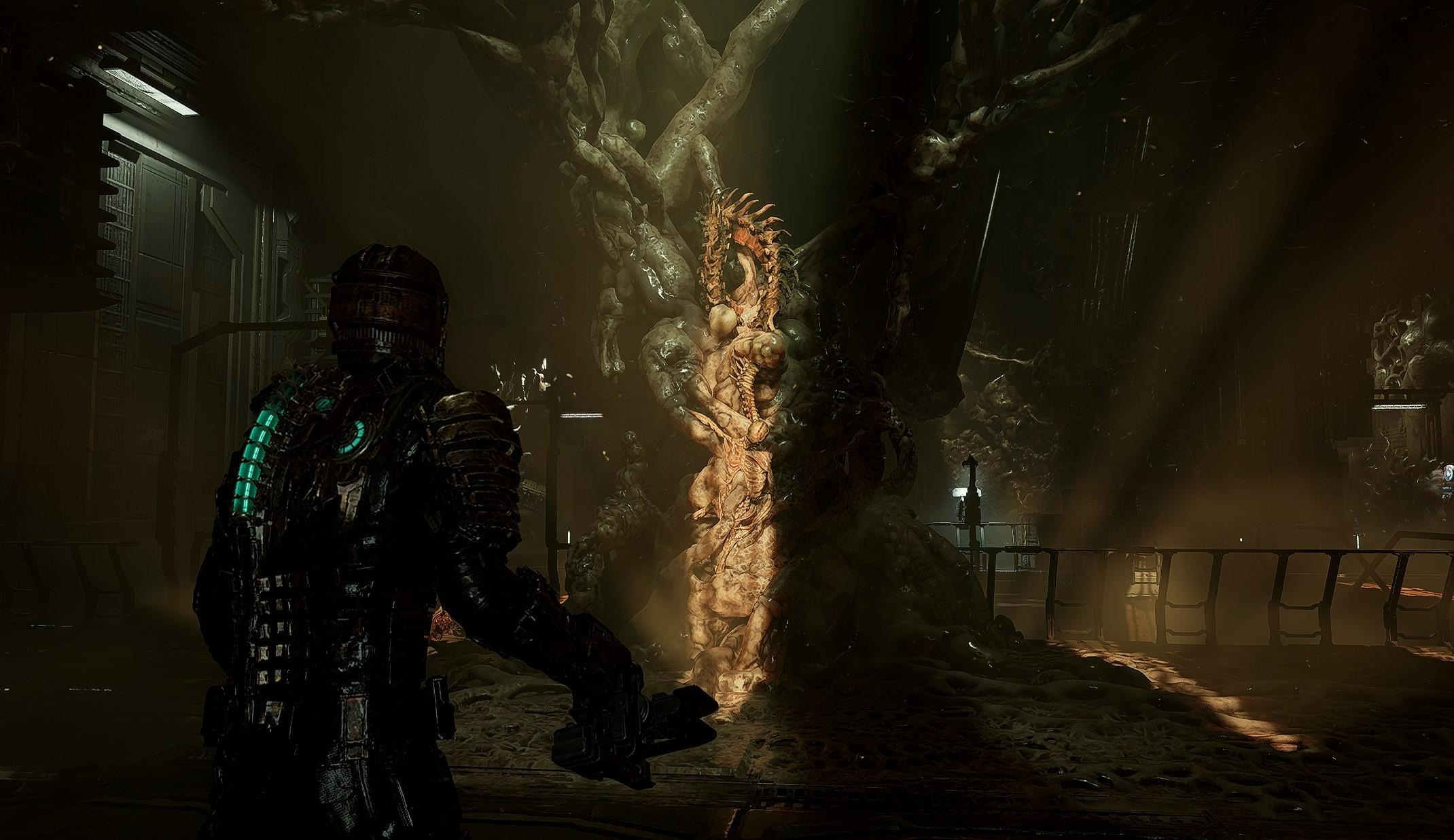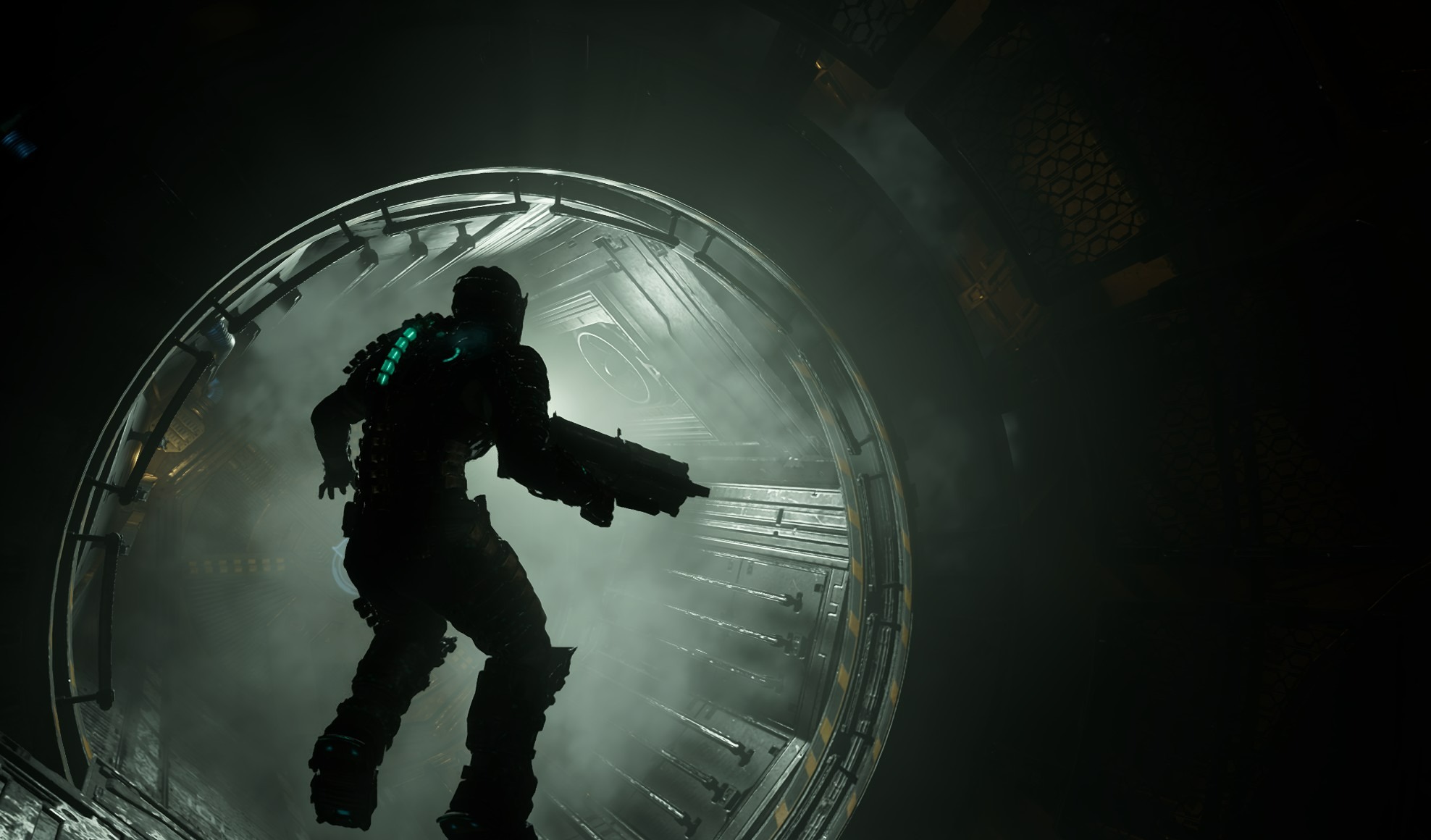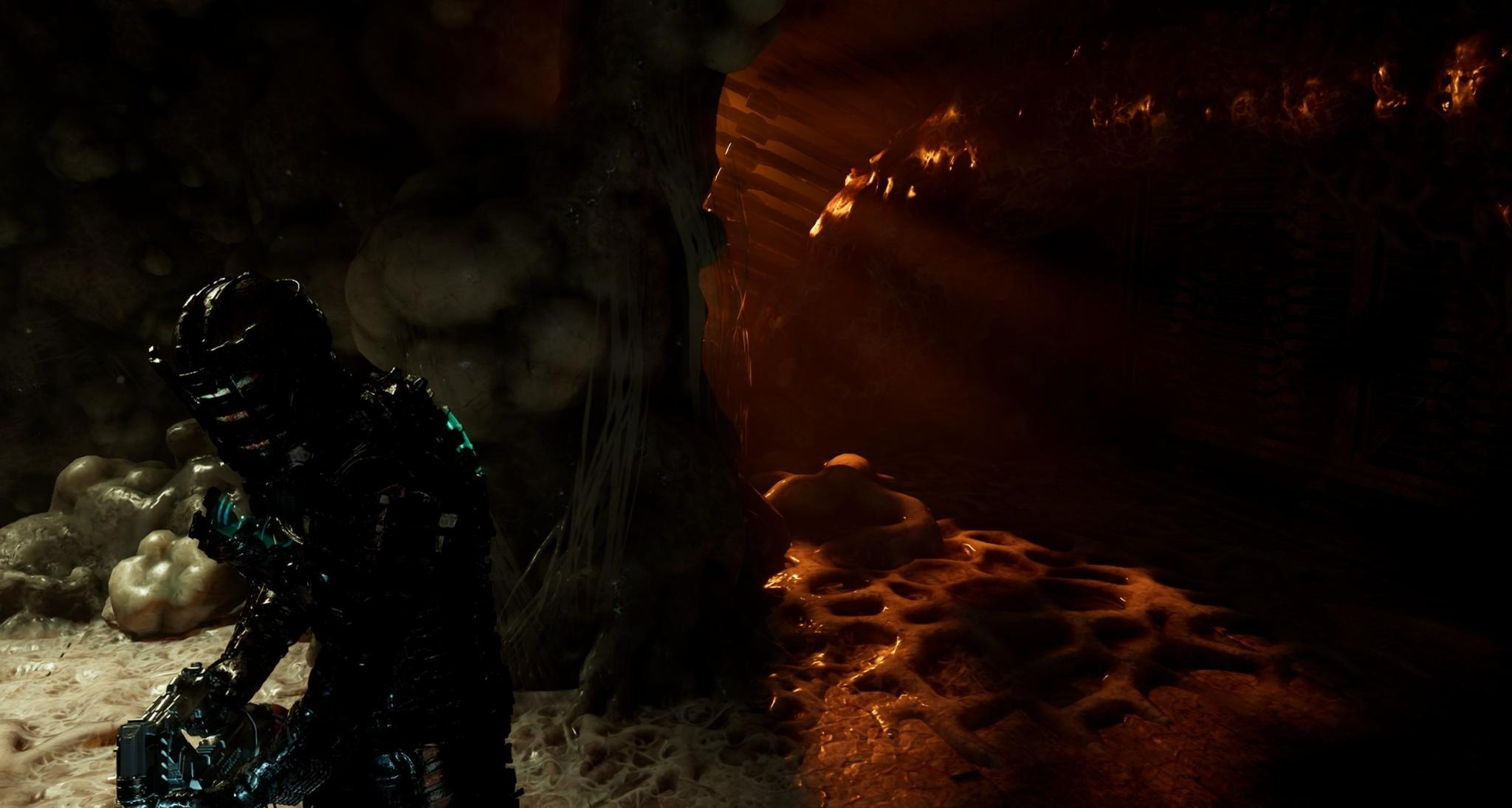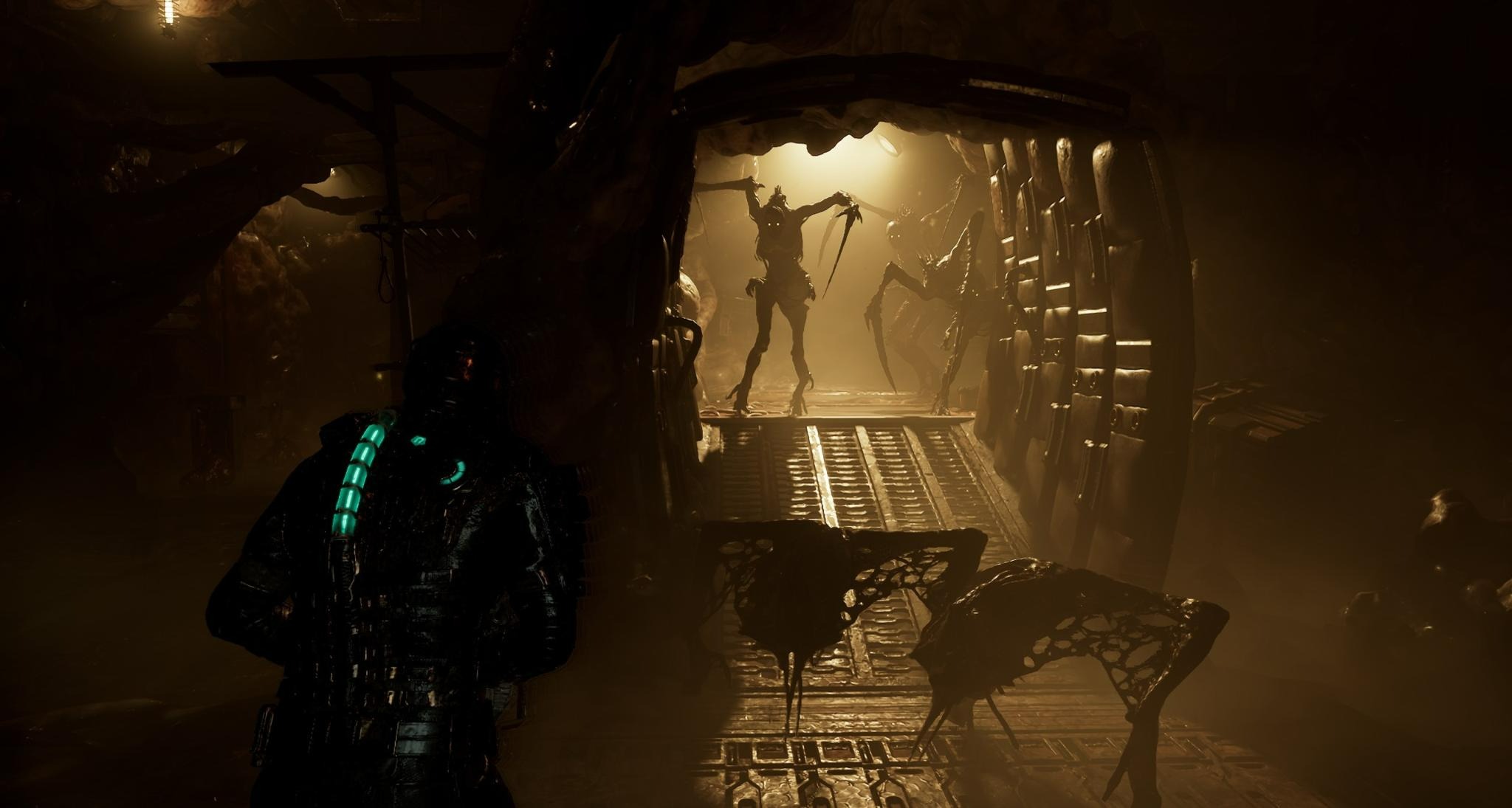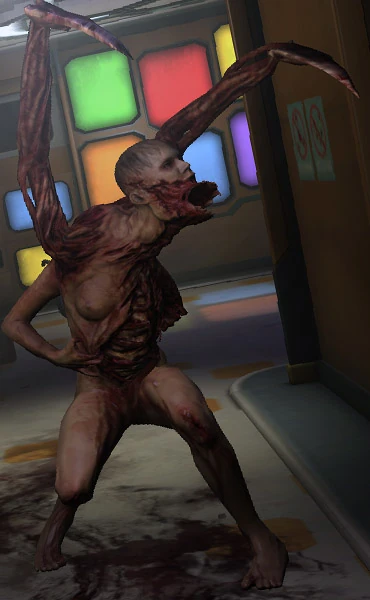⯆ Dead Space Terroir
What's This Page About?
Dead Space is one of my favorite video games of all time, and it was also one of my first introductions to horror games. I love horror, and something about Dead Space is compelling to me in a way that's unique, and that also goes beyond the boundaries of the game itself, into the development, history, advertising, influences, artistry, let's playing, fans, playstyles, etc.. I want to understand not just the story, or gameplay, but the totality of Dead Space: how it came to exist; what allowed it to come into being; why design decisions were made; how the games work; how and why the story functions the way that it does; how the medium, design decisions, and the time that it was made affect the story/content of Dead Space media; what is, or isn't included; what gets explored vs. what does not; how themes, characters, and worldbuilding get portrayed throughout the franchise, etc..
I like trying to understand things I'm interested in comprehensively, so this page is an attempt to describe the terroir of Dead Space. Terroir (in a general American accent, pronounced "tehr·waar"), defined as "the combination of factors including soil, climate, and sunlight that gives wine grapes their distinctive character", is used here in a similar way (borrowed from Jeff VanderMeer's usage in his Southern Reach trilogy) to describe the totality of culture, economics, social phenomena, politics, video game history, and the background of horror and action movies from which Dead Space was given the opportunity to form, with its distinctive themes, design decisions, story, atmosphere, and gameplay.
I have my own blind spots, and even if I didn't, there's no way to understand, much less record the totality of Dead Space's terroir. That being said, I think it might be a worthwhile project to get my thoughts down so they aren't always rattling around in my head with nowhere to go. :-)
Why Do I Like Dead Space So Much?
That's the real question.
I love horror, and I have for about as long as I can remember. My dad picked up on my interest in it when I was little, and started to show me horror movies, starting with movies like Psycho (a movie that made me refuse to take showers and take only baths for years afterward), The Birds, Night of the Living Dead (which gave me zombie nightmares that lasted until I was at least 18), Nosferatu, moving on to The Shining, Invasion of the Body Snatchers (1978), The Thing, They Live, The Exorcist, It (1990 miniseries), Carrie, and then on to slashers like Nightmare on Elm Street (after which I was almost too scared to go outside and get my bike to put in the garage after the movie, but when my dad threatened not to show me horror movies anymore if I got too scared, I forced myself to run out and get it, even if I was terrified of Freddy dragging me into the swampy pond across the street in the dark), and my first horror movie I saw in theaters: The Ring (2002), which gave me nightmares for years, and remains one of my favorite movies to this day (and incidentally is a painful exploration of how autistic children are misunderstood and mistreated because of a systematic refusal to meaningfully listen to people whose communication styles diverge from normative/neurotypical expectations), as do many of the horror movies my dad and I watched together.
I loved books like Goosebumps, and Scary Stories to Tell in the Dark, and Simpsons halloween specials. I was terrified of monsters coming to get me, and before it was monsters, it was skeletons that I imagined were hiding behind every door, under every bed, just waiting for me.
As a kid I saw ghosts and fairies, and I loved fantasy probably more than any other genre. I loved the sense of wonder, and awe, and even fear, that came with the sort of story where a character enters a fairy world (otherworld, fairyland). Stories like Coraline; stories about children or adults wandering into a world completely alien to them, where its workings and inhabitants are inherently unknowable; whose customs, culture, even sentience, is different to ours in ways that are completely incompatible with human experiences, sometimes in ways that might even be interpreted as destructive (but are they? Or is it a matter of perspective?). In 2001, at seven years old, I saw The Fellowship of the Ring in theaters. My mom had read the books to me, or maybe I just listened to them on tape, but as always, I was then, and still am, drawn to the Lothlorien sequences, as the Fellowship is led through the elven heartland as if they're on an alien planet.
As I got older, fantasy started to lose its draw as I became more familiar with the conventions of the genre, and never cemented an affinity for the sort of dragon-slayer hero adventure narratives that many popular fantasy stories follow. Instead, my fascination with fairies and otherworlds shifted to the horror genre. What other genre is so consistently, thematically, centered around characters literally or metaphorically entering a fairyland where the rules of our world are bent or broken, and the inhabitants are metaphorically or literally alien to a degree that makes their experience impenetrable to the main character(s)?
But That Can't Be the Only Reason, Right?
No, there's also the kinds of horror I'm drawn to: flesh, anatomical disruption, body horror, scifi, gore. There's the fact that when I was little, I pored over my dad's copy of the Atlas of Human Anatomy until all possible futures where I wasn't magnetically drawn to depictions of the insides of living, or once-living things were snuffed out.
There was the lack of context I had when I first encountered Dead Space. Without having ever played a horror game before (having only watched let's players play Amnesia: The Dark Descent prior to this, iirc), and only being tangentially aware of things like Silent Hill, Resident Evil, or even shooter games as a whole, the game opened up a whole world that stretched beyond its own borders (if it's even possible to neatly separate anything from what exists around it, before it, underneath it). When I saw the first Slashers crash through the vents around Isaac as he's forced to run away blindly, I was filled with excitement and wonder at seeing something that I had never seen before.
It's probably impossible to fully describe the confluence of experiences, forces, and inclinations, that make up my interest in/attachment to Dead Space, not because my interest in it is that unique, but because trying to look at the totality of something like that probably requires more insight and time than I could possibly devote to it, which is true of anything any of us like. Why do you like the things you like? Is it nature or nurture? How much of each? Could things have turned out differently? Would you want them to if they could?
Ok, putting it as generally as I can: it's really fun game. It's scary, atmospheric, it's mechanics are fun, its UI is intuitive (generally speaking) and beautiful, the enemies require strategy and their designs are inspired, and gruesome. The worldbuilding is, if light in certain areas, incredibly strong in others. The story, if sometimes limited by its medium or the culture in which it was written, is compelling, romantic, tragic, perverse, and complicated. It's full of contradictions, a push and pull of heroic vs vulnerable, competent vs misguided, immaturity in its storytelling vs its roiling emotional undercurrent, military critiques vs military worship, the vision of the developers vs the corporate dictates of EA. It's a game that has been described as "Resident Evil in space", and it's a game that's been described as "descending into hell to save your beloved".
Dead Space Media
Dead Space is a 3rd person shooter survival-horror video game franchise comprised of 4 mainline games published by EA, the first three of which were developed by (relatedly now-defunct) Visceral Games, and the fourth developed by Motive Studio:
- Dead Space (published in 2008 under Visceral's pre-restructure name "EA Redwood Shores" for Xbox 360, Playstation 3, and Windows)
- Dead Space 2 (published in 2011 for Xbox 360, Playstation 3, and Windows)
- Dead Space 3 (published in 2013 for Xbox 360, Playstation 3, and Windows)
- Dead Space (published in 2023 for Xbox series X/S, Playstation 5, and Windows)
Additionally, there are also 3 spinoff games:
- Dead Space: Extraction, an on-rails shooter and prequel to the events of Dead Space (published in 2009 by Visceral Games for the Wii, and Playstation 3)
- Dead Space Ignition, a puzzle game and prequel to the vents of Dead Space 2 (published in 2010 for Xbox 360, and Playstation 3)
- Dead Space, a 3rd person survival shooter in the style of the mainline games and a prequel to Dead Space 2 (published in 2011 by IronMonkey Studios for iOS, Android, BlackBerry, BlackBerry 10, and PlayBook)
Dead Space transmedia includes:
- Dead Space: Martyr, a tie-in novel by B.K. Evenson (published in 2010)
- Dead Space: Catalyst, a tie in novel by B.K. Evenson (published in 2012)
- Dead Space, a comic book miniseries prequel to the events of Dead Space (published in 2008, and collected into a volume in 2013 by Titan Books)
- Dead Space: Salvage, a comic that follows the story of the Ishimura after the events of Dead Space (published in 2010)
- Dead Space: Liberation, a comic acting as a prequel/expansion to the events of Dead Space 3 (published in 2013)
- Dead Space: Downfall, an animated film and prequel to the events of Dead Space (released in 2008)
- Dead Space: Aftermath, an animated film and sequel to the events of Dead Space (released in 2011)
About Dead Space
Dead Space is a video game franchise first published by EA in 2008. Most Dead Space games are single-player third-person survival-horror shooters, however there have been offshoots into on-rails shooters, puzzle games, and in the mainline series, experimentation with local and online multiplayer, local co-op campaigns, and shifting away from survival-horror, and toward a more action-heavy military shooter style. But a lot of people would probably say Dead Space is a survival horror video game franchise about Isaac Clarke the space engineer who dismembers space zombies with a futuristic plasma cutter on his way to find and rescue his doctor girlfriend on a mining ship that he came to on a repair mission (remembered for how he doesn't speak just as much as he's remembered because of his voice, his stylish helmet, and his semi-armored suit).
What Else?
Dead Space is a horror game franchise influenced by prominent survival horror games like Resident Evil 4 and System Shock; it's been described as "Resident Evil in space" by the creators and players. It also takes inspiration from action movies of the 80s, including Die Hard, on whose main character Isaac took some inspiration (perhaps seen in his desire to save his girlfriend, and, maybe most significantly, in his character not being the archetype of the soldier/fighter as seen in movies like Predator, but instead an everyman), and scifi horror of the 70s, 80s, and 90s, like Alien, John Carpenter's The Thing, and Event Horizon.
It melds the tense, atmospheric, hunted feeling of Alien as well as its cohesive visual direction and complementery soundtrack, with the sensual, fleshy body horror of The Thing (or maybe a sexless Videodrome), and the blurring of supernatural and scifi that Event Horizon leans into, as if a whole ship could go to hell and come back haunted, and that just being in that ship might be enough to doom you forever. It's also about love, and guilt.
What About the Gameplay?
In Dead Space (2008) and Dead Space (2023), you play as Isaac Clarke, and use a rang of futuristic mining tools to dismember reanimated human corpses mutated by an alien intelligence to survive on the Ishimura (the mining ship that Nicole Brennan-Isaac's girlfriend-works on). You will need to manage Isaac's inventory and upgrade his RIG (suit) and weapons in between fixing just about everything wrong with the Ishimura on your way to find Nicole and a way off the ship infested with Necromorphs.
Unlike many other shooter games, the object of combat is not to hit enemies in the body or the head. Instead, players are encouraged to aim for the limbs of enemies (and occasionally for visually distinct weak points, or body parts which don't necessarily qualify as "limbs" such as tendrils or tails). The weapons are diverse, and have both a primary fire, and a secondary fire, and players can have up to four equipped at any given time.
Besides primary weapons, there Isaac has a few other abilities that can be used in combat as well as during puzzle solving and other gameplay: Kinesis allows Isaac to pick up and throw objects, Stasis allows Isaac to fire a ball of energy that expands into an AOE (Area of Effect) that slows down enemies inside it, as well as being able to slow down moving objects, and Isaac's melee attacks (stomp, and swing), which do relatively little damage, but can be used in combat, and/or to break certain objects.
Necromorphs
Overview
Types
Characters
Dead Space (2023, 2008) Characters
Isaac Clarke
Dr. Nicole Brennan
Kendra Daniels
CSO Zach Hammond
Cpl. Hailey Johnston (Johnston)
Cpl. Aiden Chen (Chen)
Dr. Challus Mercer
Dr. Terrence Kyne
Dr. Elizabeth Cross
Jacob Temple
Brant Harris
Benjamin Mathius
Dead Space 2 Characters
Isaac Clarke
Nicole Brennan
Nolan Stross
Daina Le Guin
Dir. Hans Tiedemann
Ellie Langford
Franco
Gabe Weller
Lexine Murdoch
Dead Space 3 Characters
Isaac Clarke
Ellie Langford
Sgt. John Carver
Cpt. Robert Norton
Jacob Danik
Jennifer Santos
Austin Buckell
Lighting, Space, and Visual Motif
In the 2008 and 2023 versions of Dead Space, the lighting and environmental design complement one another dazzlingly. Between all the flickering, intestinal corridors and fresh wreckage of things that happened just before Isaac arrived; sometimes just before Isaac walked in, there are cavernous zero-gravity rooms sometimes overgrown with ropes of flesh sharp flourescent lights embedded in the fleshy ropes that cover the walls like vines, or scabs. There are rooms that breathe, or flash deep orange with the Ishimura's failing immune system; maybe only the equivalent of the last electrical impulses and chemical reactions of life running their course before the body stops moving entirely.
The impact of Dead Space's visual language is achieved in part through manipulating scale, contrast, and repeating visual motifs that recall industrial and gothic architecture as well as the human body.
Visual Motif
Borrowing from gothic architectural style despite its often claustrophobic nature contrasting with the grand, highly vertical architectural style, the Ishimura (as well as the colony on Aegis VII) display the pointed arches, and a harder-edged version of the S-shaped pattern that gives flamboyant gothic architecture its name in the interiors of the Ishimura. Grating in particular shows off these influences [ADD SCREENSHOTS LATER]:
The alternating motif that binds the visual language of the game evokes a more futuristic take on the flame pattern of flamboyant gothic architecture, as well as the architecture of the human body: ribs, bones, teeth. In this context, the motif takes on an ironically organic association despite its hard edges, often "rounding" the corners of forms that typically have 90 degree angles (device screens, doorways, desks, etc.).
As a visual representation of the game's anatomical and gory focus, the motif of ribs, as well as spinal columns, but not of human faces or skulls, reminds the viewer of contextless anatomy, featureless gore, loss of identity through decay or purposeful destruction (psychological destruction from Unitology, or physical destruction/reorganization by Necromorphia).
Heterosexual Sex and Queer Eroticism in Dead Space
Released in 2008, the first Dead Space is nearly sexless on first glance. Designed with young men as the target audience, one could imagine that the de-sexed world of Dead Space was an intentional design decision.
Chuck Beaver, producer and a writer for all three original mainline Dead Space games, commented on this decision during the "Original Dead Space Dev Reacts" series in the video OG Dead Space Dev REACTS to ICONIC Remake Scene. When describing the sequence in Dead Space (2008), in which Isaac restarts the Ishimura's engines, he explains: "The original final animation of success there, we were like, um, it looks like it's fucking. [laughter] 'We're going to have to redo this animation of this engine doing its thing.'"
This illustrates what seems to be a deliberate choice to leave sexuality out of the main narrative, although it doesn't mean that sexuality or eroticism is not present in the games at all.
So why leave it out?
My thoughts on that are twofold: first, that the story as it exists doesn't "need" sexuality in order to be told, which is not to say that the story emerged fully formed (just ask Nicole, who didn't exist in earlier versions of the story), but that the horror is focused on immediate survival; second, and slightly more likely to me, is the possibility that explicit references to sex/eroticism were avoided to make players (presumably assumed to be young cishet white men) uncomfortable.
To be clear: including sexuality doesn't necessarily mean including explicit depictions of sex, genitals, or nudity. It doesn't inherently mean that the game would need to be rated AO (Adults Only, 18+) rather than M (Mature, 17+), either. However, it is very likely that some aspects, such as the decision to make necromorphs sexless (though a few variations do have visible breasts such as the Spitters, a variant of the Slasher, and the stationary Nests) were made at least in part due to restrictions on M-rated games and/or guidelines given to the dev team.
The second possibility is more interesting to me. Alien is a movie whose premise is based on reproduction, and whose visual language is defined in large part by H.R. Giger, his work inextricable from the expression of perverse sexuality; from the lens of the anatomical, mechanical functions of the human body: birth, fucking, death. Phallic female Xenomorphs; aggressive, yonic Facehuggers; corridors ribbed like soft flesh.
Yet these aspects are exised from Dead Space, and my opinion is that this points to a (typically Puritan US-American) cultural discomfort with sexuality, particularly sexuality which falls outside of the prescribed heterosexual cisgender norm. While the Necromorphs' shredded, sometimes altogether missing uniforms reveal the viscera and torn flesh underneath, its goal is not to titilate, but to frighten and shock the player; to evoke "mutilation" that could be enacted upon the player's body, to make them cringe at the thought of their own bodies being stretched and ripped and re-formed by something that strips their identity away, and wears them like a puppet.
